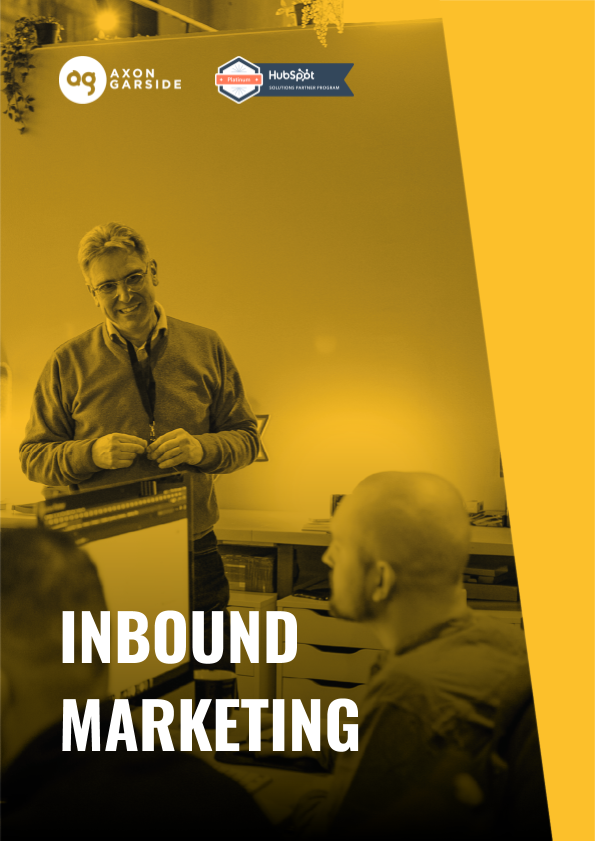How to Stop Creating Ineffective B2B Marketing Messages
Find out how to make sure your B2B marketing messages resonate with your target audience and help to generate qualified leads online.

Research from McKinsey has found an "apparent divergence between the core messages companies communicate about their brands and the characteristics that customers value most".
In other words, B2B buyers are often not interested in what B2B suppliers are saying.
The McKinsey research compared the brand messaging of 90 top B2B brands with the stated buying criteria of more than 700 global executives. McKinsey found that while B2B marketers talked about their company's global reach, for example, buyers were more interested in finding out about the specialist market knowledge of potential suppliers. Worse still, most suppliers talked about exactly the same things in exactly the same way, so their marketing messages failed both the key tests of relevance and differentiation.
No wonder buyers often aren't interested in all those carefully crafted brand marketing messages (aka chest-beating exercises)!
A well-researched and well-written value proposition can solve this critical problem and make sure the component parts of an online strategy, such as your website, blogs and social media posts, are not merely interesting to potential buyers, but become a magnet that will attract visitors and lay the basis for successful online lead generation campaigns.
What is an online value proposition?
It was McKinsey that originally defined value propositions back in the 1980s. A TechTarget article defines a value proposition as "a statement that clearly identifies what benefits a customer will receive by purchasing a particular product or service from a particular vendor".
At Axon Garside, we summarise a value proposition as the answer to three questions:
- What is really important to your customers?
- How can your products or services help them with those things that are important to them?
- What can you do to help them that you do better than your competitors?
How will clear messaging boost online marketing results?
If you can answer those three questions you'll be able to create brand messages that are relevant to your B2B customers, differentiate you from the competition and provide a focus for your sales and marketing communications.
This will make sure that:
- potential customers find you online and offline when they're looking for solutions to their problems because you'll use their language to talk about their concerns and pain points
- your website and other online content will clearly differentiate your company from the competition
- your company will be seen as the best solution to customer problems because you'll be talking about the benefits that mean most to the buyer - and you'll have the best chance of winning competitive pitches
- your content marketing will appeal to buyers at every stage of the buying process because your content strategy will have been clearly defined by your value proposition
How is an effective online value proposition put together?
At Axon Garside we take a seven-stage approach to defining a value proposition. The answers to these seven questions will help you to achieve your inbound marketing objectives:
1. Who are your customers?
B2B marketers often define customers by segment or role in the decision-making process. Such traditional segmentation is a good starting point because it will allow you to frame your messaging in appropriate language and provide some definition of likely problems that you can help to solve. A finance executive may have a different perspective from an operations director or a hands-on user, for example.
However, the deeper you go, the more your messages will resonate with your audience. For example: How well do your potential customers understand their challenges - or the options available to them? What language do they use to describe their problems? What are their true concerns and motivations in considering a purchase? If your solutions are ideally suited to a first-time buyer then you probably need to avoid industry speak in your messaging and your blogs should address the questions that such a buyer would have top of mind. If yours is an experienced buyer, the language they use and insight they bring to bear will be very different and your brand messages need to reflect that.
2. What are the customers' most important needs?
Needs are not just the needs that arise from formal roles. An understanding of motivations can be invaluable too. Very often a buyer's career prospects are just as important. How will your product help?
3. How do you categorise your product or service?
It is sometimes tempting to invent a category that, in the absence of any competition, your company can dominate. However, in a world where the customer now resists interruptive marketing and prefers to find his/her own suppliers online, using language that the customer understands - and more importantly uses - is vital. This information will inform your keyword strategy when you come to promote your content online.
4. What benefits are offered to the customer?
Very likely you'll have a long list of potential benefits, but web users have limited time to spend with your content - and an increasingly short attention span. You need to prioritise the benefits that you offer and tailor them to your buyer segments and personas (buyer types).
5. Who are your competitors?
Your competitors are not only organisations that provide similar products or services. Remember: The customer doesn't want to buy a product. He or she wants to solve a problem. Competitors may do something quite different but provide answers to similar customer needs. If you sell software, for example, it's easy to discount a different kind of software, but the customer may not see the difference. They may also be able to solve their problem without any new technology at all. There could be a training or consultancy approach that represents the real competition for the customer's budget.
6. What differentiates you from the competition?
Don't attempt to answer this question unless you have clear answers to questions one to five. Very often we find that B2B messages focus on points of differentiation that are either not really that different, or that don't matter to the customer. You're looking for things that are really important to the customer and which you do much better than the competition. This may be nothing to do with the product and everything to do with customer response times. Nothing to do with the new whizz bang on the product, but everything to do with the availability of parts. If it's important to existing customers, it's probably important to potential customers too, and that should be the basis of your marketing message.
7. How can you validate this?
If you can't prove it, don't say it.
After working through this process you'll have a clear message to take to market. This will inform not only how you talk about your company and its products, but your content marketing as well. Once you know what makes you different, you can provide valuable help and advice to customers in a way that will make them more likely to buy from you once they get down to the ITT or supplier selection stage. Your messages will do their job all the way through the customer's buying process because they will have been consistent throughout the sales and marketing funnel.
Note: This post was originally published in November 2013 with the title How to Create B2B Marketing Messages that Generate More Leads. This is an updated version, republished in light of another recent post based on McKinsey research: How to Prosper in B2B Tech Marketing's New Golden Age.
 Ian Guiver
Ian Guiver
